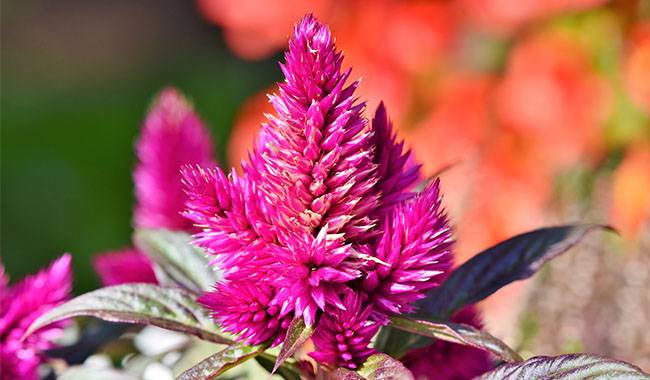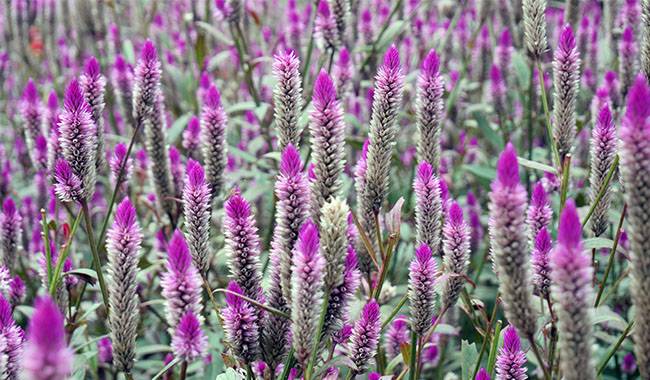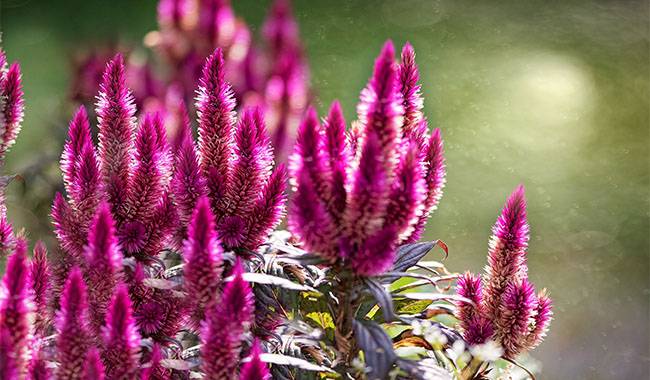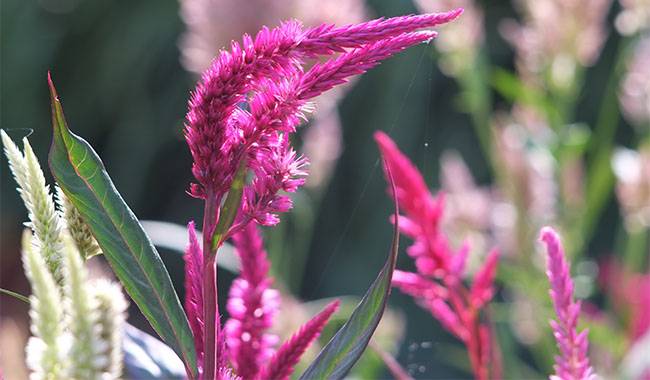
How to care for celosia, this article will show you.
Celosia likes heat and you should not forget about it. Therefore, gardeners are advised to create greenhouse conditions for the growth of plants.
Many breeders are diligently engaged in the development of cold-resistant varieties, and they succeed, but there are also new varieties that develop better in warmer conditions.
The requirements of this plant are quite high. Caring for it involves providing the conditions properly. celosia should be in a well-lit place.
The plant has a special preference for watering, as she does not like to be over-watered, while the dryness of the soil can have a bad effect on its development.
However, regarding fertilizers, Celosia has no particular preference. For this reason, an ordinary fertilizer for garden flowers is sufficient.
However, it is not recommended to use nitrogen fertilizers, as they improve the development of the leaves. To keep Celosia in flower, it is recommended to keep an eye on the foliage, as well as to eliminate dry inflorescences.
Pests may attack the plant. Aphids are especially dangerous. It destroys the shoots and leaves. Aphids must be used against it.
When the plant is not enough strong, the plant will have some problems which we call black feet. To prevent this from happening, you need to carefully follow the rules of watering.
Do it in the morning, on a bright sunny day. Gardeners recommend not watering at all on cloudy days, as it is quite sensitive to weather changes.
If black feet still appear, it is recommended to loosen the soil, add ash treatment and reduce watering. It is the excessive water and poor drainage that lead to this.
If you heed these tips and stick to all the rules of care, then Celosia will develop normally. Eventually, it will thank its owner with beautiful inflorescences that will be a pleasure to look at throughout the summer.

CELOSIA MAINTENANCE RECOMMENDED BY EXPERTS
Celosia not only impresses with its beautiful appearance, but it is also easy to grow. Propagation of Celosia is not very difficult. It is usually propagated by seeds, as the ornamental nature of the plant is sometimes lost when cuttings are taken.
Buy seeds of mixed varieties and let the colorful and vibrant Celosia flourish for a long time on the balcony and in the garden – throughout the warm part of summer and autumn.
Celosia grows easily from seed. Celosia seedlings are sown in March-April under plastic sheeting. Sowing on the moist soil surface is rare.
Seedlings are set in pots because the plants do not tolerate open transplanting. early June, when the threat of frost is over, the seedlings are planted in a permanent place.
Celosia can be sown immediately in separate pots so as not to damage the roots of the plant during picking. the first shoots appear after 4-6 days.
The soil should be fertile, loose, well-structured, and acid-free. A sheltered, warm, sunny place without standing water is desirable.
The distance between plants depends on the variety, ranging from 15cm (5.9inch) for low varieties and 30-35cm (11.8-13.7inch) for tall varieties.
Water well at the beginning of growth. Fertilize with whole mineral fertilizer every 10-15 days. If the plants are overfed with nitrogen and organic matter, they will grow strong but will flower poorly.
Celosia seedlings grow at a moderate room temperature of 62-68°F (17-20°C) with good light and ventilation. Preferably on a lighted window to protect from the hot sun.
The main thing is moderate and careful watering. Do not over-dry the soil or flood the young plants, as the roots of Celosia seedlings can easily rot due to over-wet soil.
Transplanting young plants into the open ground should be done only after the end of the spring cold snap. It is very thermophilic and does not tolerate even the lightest frosts!
The best place to plant Celosia in the garden is in full sun and sheltered from cold winds. A soil that is easily decomposed, slightly acidic, and well-drained is desirable.
Celosia is planted in flower beds, squares, and borders. It grows well in containers, on balconies, and in windowsills. flowering begins in late June and continues until frost.
Fertilize once a month with mineral fertilizer. Celosia responds very well to fertilizer and blooms profusely.
On hot, dry days, Celosia must be watered well, otherwise, Celosia will leak leaves and not form new flower stalks.
A tip for dried flower lovers and winter bouquet makers: Celosia is perfect for flower arrangements!
The inflorescence of Celosia retains its “frangipani” shape and form for a long time. They do not lose their color if cut before the seeds begins to ripen and dry well for two weeks in a dark, cool place.
TIPS FOR THE END
After planting in the open ground, some care – watering and fertilizing – is required. Since Celosia seedlings do not tolerate dry soil, it is important to keep the soil moist regularly. Water only in the morning and often. But do not allow too much water in the soil, as it will lead to root rot.
Fertilizer should be used and applied every 3 weeks (15 grams of fertilizer per 5 liters of water). Do not introduce too much nitrogen, otherwise, you will get lush and spreading leaves but no blooms.
Celosia easily stops flowering stems due to a lack of water. On hot days, it needs a lot of water.
Finally, don’t forget to remove weeds and loosen the soil in time. The wisdom of taking care of Celosia is basically here.





